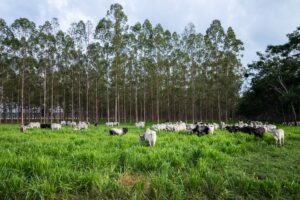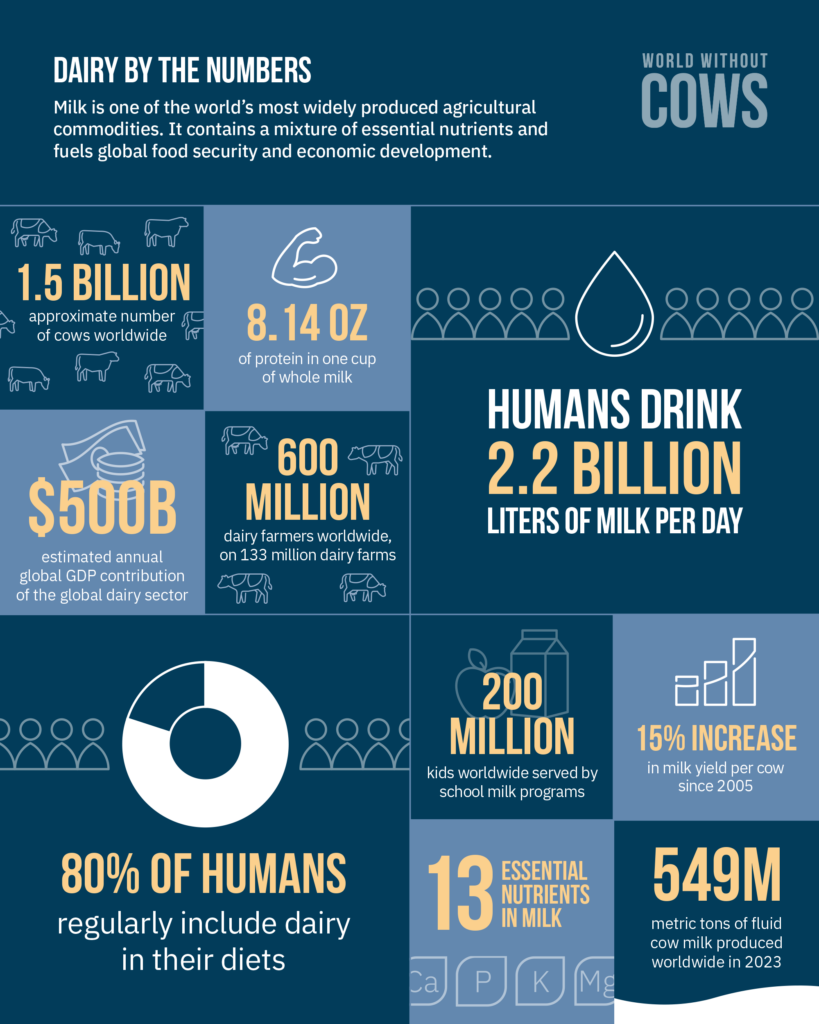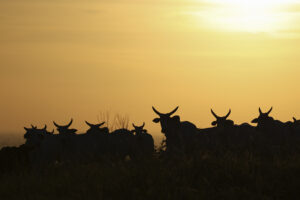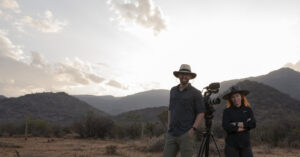
Can Brazil save the Amazon and produce enough beef to feed the world?
Restoring 40 million hectares of pasture could feed billions and ease pressure on the Amazon. Is the world paying attention?
By 2060, our global population is expected to reach 10 billion, requiring 70% more food than what is available today. This means that in the next 30 to 40 years, as much food will need to be produced as in the past 10,000 years of human history. Yet, with one in four children globally already suffering from malnutrition, it’s clear that simply feeding the world is not enough: we must ensure access to safe, nutrient-rich foods that can nourish people for generations to come — while replenishing the planet’s natural resources.
Malnutrition remains a pressing global challenge. According to the 2021 Global Nutrition Report, nearly 150 million children under 5 years of age are stunted, and more than 45 million are wasted — a condition marked by significant weight loss or low weight due to inadequate nutrition or disease. It can result from factors like food scarcity, illness or poor sanitation. These conditions, exacerbated by climate change, highlight the urgent need for progress around the world.
Compounding this challenge is the fact that climate change is now considered one of the most significant headwinds in solving malnutrition, according to the Gates Foundation Goalkeepers, a nonprofit organization fighting poverty, disease and inequity around the world. In fact, the Institute for Health Metrics and Evaluation, a public health research institute of the University of Washington in Seattle, estimates that between now and 2050, climate change will mean that 40 million additional children will be stunted and 28 million wasted.
Because less stunting is seen in children with greater dairy consumption, producing more milk is one way to help meet the nutritional needs of children who are at risk for malnutrition.
This raises a key question, however. If cows produce milk but also emit methane — a contributor to global warming — and climate change is directly tied to malnutrition, how can cows be a part of the solution to this increasingly complex challenge?
When it comes to the role of cows in our global food system, their significance to culture and economies and their impact on climate, the answer is far from simple. As we grapple with the challenges that come along with nourishing the world’s rapidly growing population, it has never been more vital that we explore the impact of cows on our world, not just environmentally, but also culturally, economically and nutritionally.
Poor nutrition is the single greatest threat to the world’s health, especially when it comes to vulnerable populations like children, according to the World Health Organization. For the more than 30 million acutely malnourished children in the 15 countries hit the hardest by an unprecedented food and nutrition crisis, milk is more than just a drink. It’s a means to survive, and hope for a future.
Milk is one of the most nutrient-dense foods available. For a child 4–8 years of age, an 8-ounce glass of milk provides:
In fact, milk provides higher amounts of protein, calcium and potassium per calorie than any other commonly consumed food, making it one of the world’s most vital sources of nutrition.
For millions of children in vulnerable regions, milk is more than a source of nutrition — it’s a lifeline. In India, where 38% of children under age five are stunted, milk is often the cornerstone of efforts to combat malnutrition. Many Indian schoolchildren receive a daily serving of milk as part of a school milk program.
“The world without cows to us is a world without protein for the bulk of India because of the religious sensitivity involved around being a vegetarian, or not being a meat-eating or egg-eating country,” said Shrirang Sarda, CEO of Sarda Farms in India. “Even the government schools provide a glass of milk to every child.”

The evidence is clear: Milk is a nutrient-rich food that addresses many nutritional deficits of children around the world. Despite its benefits, many low-income countries struggle to produce enough safe, affordable milk.
Farmers in low-income countries are implementing proven dairy solutions to build a safer, more nutritious food system. In Kenya, where most cows produce only 2 liters of milk per day, innovative agricultural technologies are changing the game. By utilizing technologies that use DNA and data to help farmers select cows that give birth to more productive offspring, an increasing number of Kenyan cows are now producing 6 to 10 times more milk. For countries like Kenya, this means more milk to drink at home and more income for dairy farmers and vendors.
These efforts are not just crucial to increasing the productivity of dairy cows in the countries that need milk the most, they also mean better health for children. By improving dairy productivity in just five countries — Ethiopia, India, Kenya, Nigeria and Tanzania — 109 million cases of stunting could be prevented by 2050, according to the International Food Policy Research Institute.
So how can we strike a balance, producing enough safe, nutrient-rich food to feed a rising global population while also protecting the environment? According to Jay Waldvogel, former senior vice president of Strategy and International Development at Dairy Farmers of America, it starts with an open and honest dialogue.
“We just need to be able to engage in a conversation. And too often, we’re trying to shut down the conversation, and we’re trying to declare that we’re right,” said Waldvogel, who believes no industry is better positioned than dairy to help solve the global crises our planet is facing. “When you look at dairy holistically – look at agriculture holistically, the positives far outweigh the negatives.”
“The fact is, the dairy industry touches billions of people around the world, so it can’t be accurately assessed from a single perspective. You have to pull back and take a bird’s eye view,” he said. “From that vantage point, you can see the full picture and grasp dairy for what it is — a comprehensive global ecosystem that nourishes people, sustains economies and communities and is increasingly good for the planet. Dairy encompasses the 6 billion people who eat and drink its products annually, as well as the 600 million people who live and work on the world’s 133 million dairy farms. And 1 billion people who rely on the dairy sector to support their livelihoods and communities.’
The dairy industry is embracing sustainable practices and actively working to improve its environmental footprint, Waldvogel has said. Organizations like Global Dairy Platform’s Dairy Nourishes Africa and others are working to bring these practices to dairy farmers who need help reducing their environmental impact and increasing milk production and efficiency.
Balancing nutrition security with accessible, sustainable practices is no small feat, but it’s also not impossible. Milk and dairy products, as proven sources of critical nutrients, are central to addressing both malnutrition and environmental sustainability.
“Dairy’s impact is vast and deep. It nourishes people, supports vibrant communities and is good for the planet,” Waldvogel said. “Taking dairy out of the equation removes the benefits that come with it. Instead of taking things away, let’s continue improving what we have and embrace the many ways dairy contributes positively to our lives.”
We have the resources and technology to fight climate change and malnutrition, but one thing is increasingly clear: We cannot make global progress with a black-and-white perspective. Progress depends on finding common ground and working together.

Restoring 40 million hectares of pasture could feed billions and ease pressure on the Amazon. Is the world paying attention?

New mini-doc explores deforestation, food security and the Brazilian cattle sector’s path to a more sustainable future

Mention Brazilian beef, and you’re likely to spark discussion about familiar themes: deforestation, emissions and blame. What do we find when we dig deeper? Here are the answers to five top questions about Brazil’s role in protecting the Amazon and feeding the world.

From science to the big screen: Discover how a single question grew into a global journey.

The role of essential oils like thyme, oregano and clove in reducing methane emissions from cattle.

Exploring the science of cows, climate change and how greenhouse gases move through the atmosphere
As climate change intensifies and the world’s population continues to grow, the pressure on our global food production system mounts. You can play an active role in shaping a more sustainable planet for future generations. Fill out the form below to learn more about how you can partner with us.
Receive notifications about the release date, new online content and how you can get involved